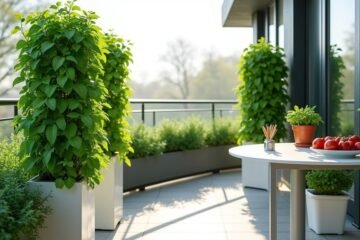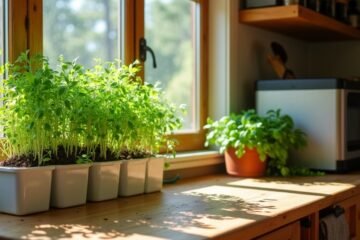Ready to grow your own veggies without dirt? Building a hydroponic gardening system is easier than you think! Picture fresh basil, crisp lettuce, or juicy tomatoes thriving indoors—no weeding! You’ll need a container, a water pump, and nutrient solutions. Choose from systems like Ebb Flow or Nutrient Film Technique for a perfect fit. Imagine plucking vibrant greens right from your home! Curious about maintaining your garden and troubleshooting issues? Hang tight; there’s so much more to explore!
Understanding Hydroponics
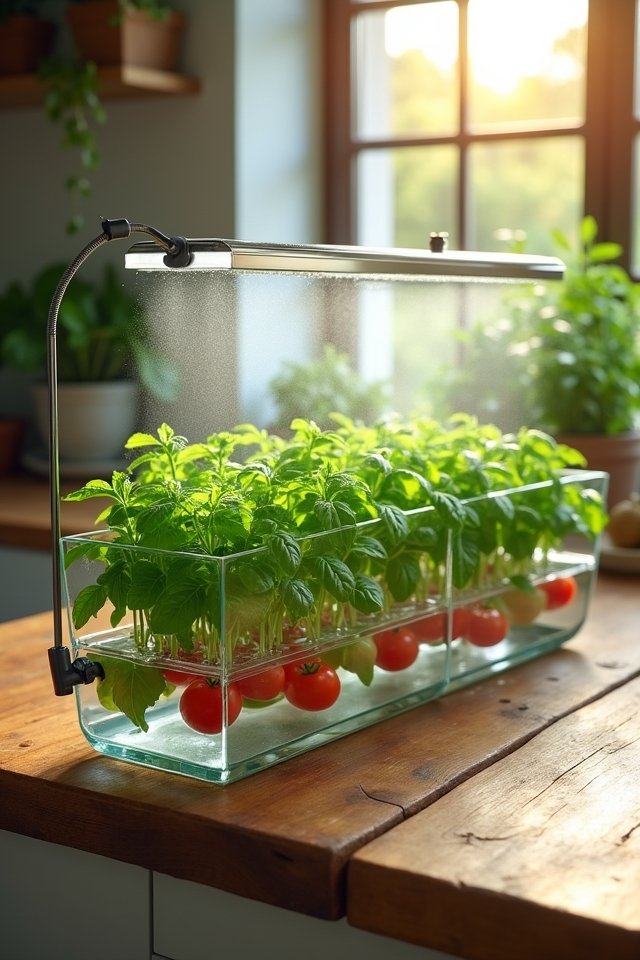
Have you ever dreamed of growing your own fresh vegetables year-round, even in the dead of winter? Well, you can! Hydroponics is a groundbreaking method that lets you cultivate plants without soil, using nutrient solutions instead. Imagine plucking crisp lettuce or juicy tomatoes right from your indoor garden, no matter the weather outside! The hydroponic benefits are plenty: faster growth rates, higher yields, and space efficiency. You’ll love how little water it uses compared to traditional gardening—it’s like giving Mother Nature a high-five! Plus, no pesky weeds to deal with—it’s just you, your plants, and that sweet satisfaction of fresh produce on your plate. With a system like this, you’re not just innovating your gardening style; you’re elevating your entire culinary experience!
Essential Materials for Your System
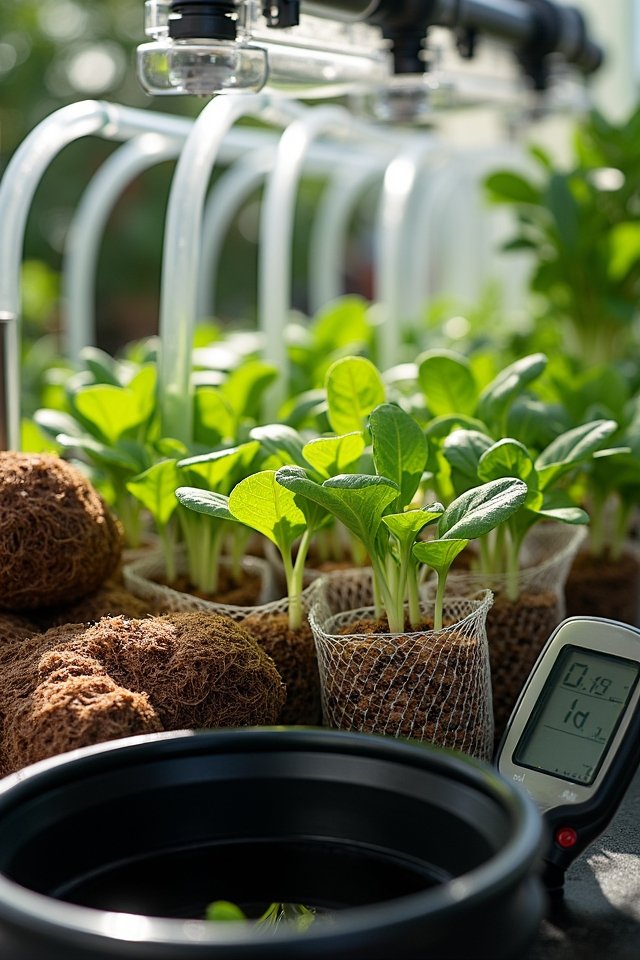
To create your very own hydroponic garden, you’ll need a handful of essential materials that are sure to turn your indoor space into a vibrant green sanctuary! First, grab some nutrient solutions; they’re like the magical potion your plants crave, providing all the necessary vitamins and minerals. Next, pick your grow media, which can be anything from rock wool to clay pellets—think of it as the cozy bed for your plant babies! You’ll also need a reservoir for your nutrient mix, a pump to keep that delicious goodness flowing, and proper lighting—a sun substitute to help your lush garden flourish. With these materials, you’ll be well on your way to growing your green-thumbed dreams! Get ready to dig in!
Types of Hydroponic Systems
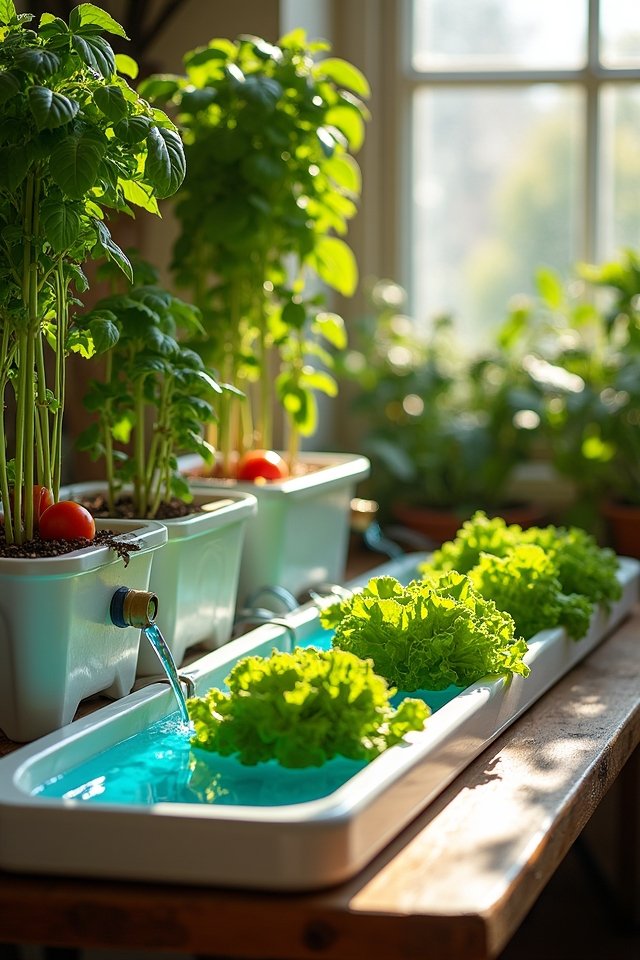
When you’re ready to immerse yourself in the exciting world of hydroponics, you’re bound to come across several types of systems, each with its own unique charm! Take the Nutrient Film Technique, for example—it’s like giving your plants a nutrient-rich spa treatment! A thin film of nutrient solution flows over the plant roots, ensuring they get just the right amount of food.
Then there’s Ebb Flow, which is as dynamic as a dance! In this system, you flood your trays with nutrient solution, then drain it away, allowing your plants to breathe.
Each method offers a thrilling adventure for your indoor garden, so immerse yourself and see which one suits your green-thumb aspirations best! Ready to nurture those plants? Let’s go!
Step-by-Step Guide to Building Your System
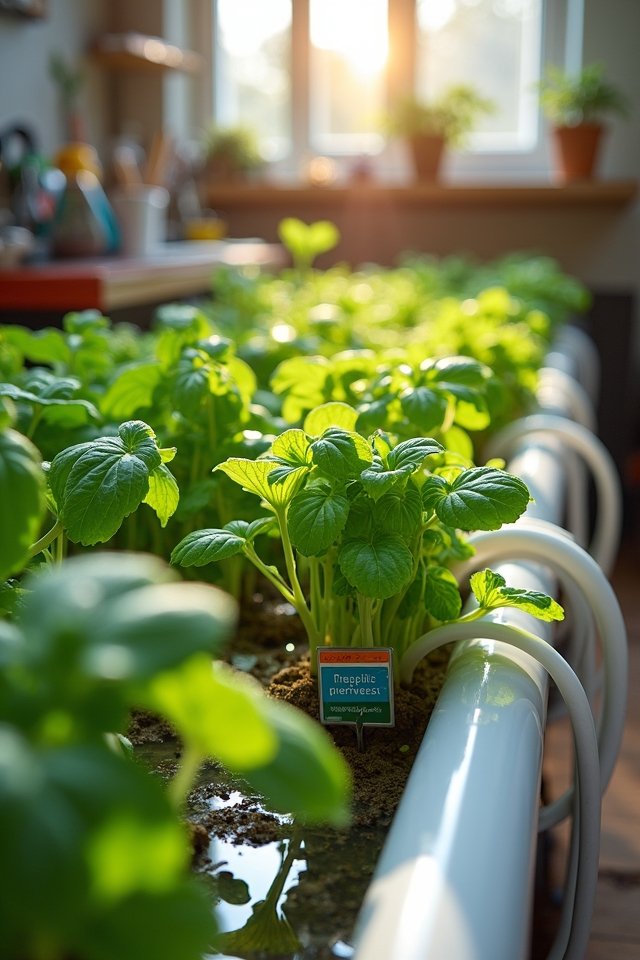
Building your very own hydroponic gardening system can be an exhilarating journey—think of it as crafting a futuristic oasis right in your home! Ready to plunge into DIY Hydroponics? Start by assembling your materials: a container, a water pump, and nutrient-rich solution. Cut your net pots, fill ’em with growing medium, and get set to plant! As you watch those roots reach down, you’ll experience the Hydroponic Benefits firsthand. Imagine fresh herbs and veggies thriving like never before! Don’t fret the learning curve; it’s as easy as pie—just like discovering you can grow food without soil. Feeling pumped? Settle in for the ride, and let your indoor garden bloom! You’ve got this, budding botanist!
Choosing the Right Plants for Hydroponics
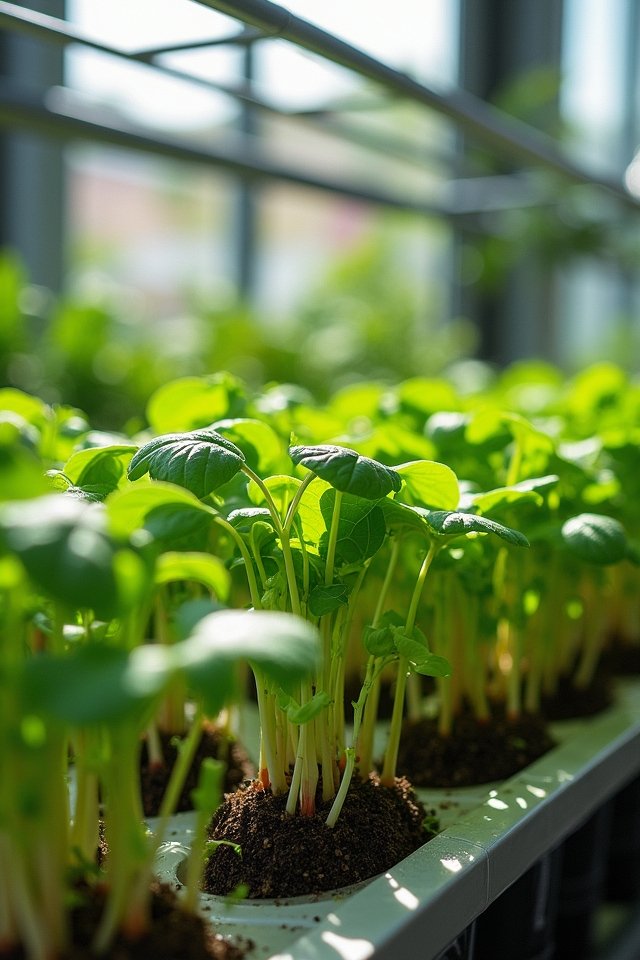
Picking the right plants for your hydroponic garden can feel like a delightful puzzle! Get ready to release your inner plant scientist! Consider popular plant varieties like basil, lettuce, and strawberries—each with distinct growth cycles that’ll keep your garden lively. Quick-growing options, such as arugula, allow you to enjoy fresh greens in just a few weeks. Meanwhile, luscious tomatoes demand a bit more time but reward you with juicy bites! Remember, you’ll want to select plants that thrive together, maximizing space and nutrient efficiency. So, why not mix high-energy herbs alongside colorful flowers? It’s like a botanical party! With the right combinations, you’ll have a thriving hydroponic haven that’s as innovative as you are!
Maintaining and Monitoring Your Hydroponic Garden
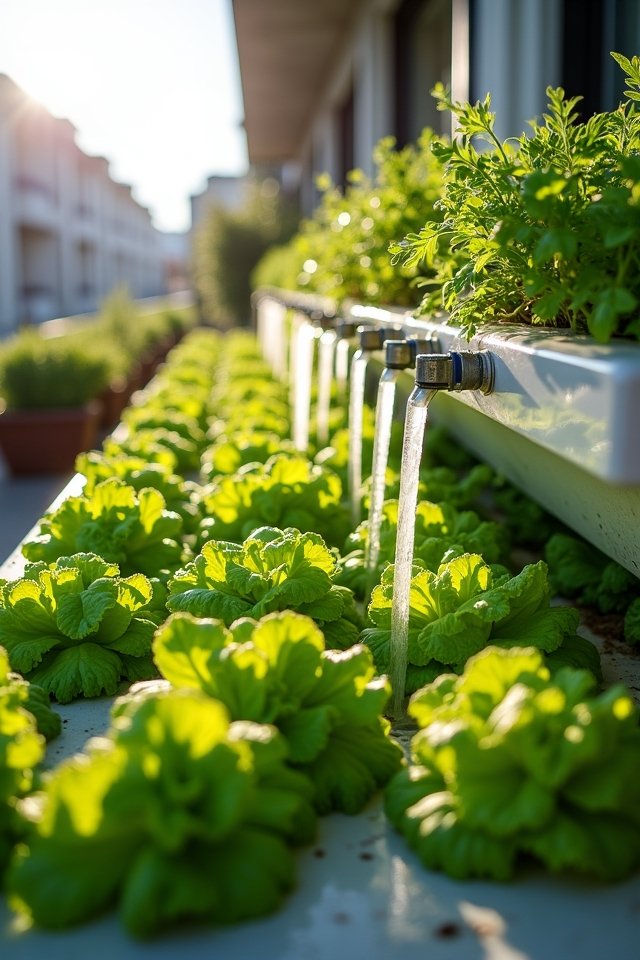
A vibrant hydroponic garden doesn’t just happen; it thrives on your commitment to maintaining it! To keep your plants dancing joyfully, you’ll want to routinely check the pH levels of your nutrient solution. Think of pH as the mood ring of your garden—it should hover between 5.5 and 6.5 for ideal growth. Balance is key! Just like a delicious recipe, your plants need the right mix of nutrients. Monitor their feeding, adjusting as needed based on plant growth. Have you noticed any leaves drooping? A quick check can save the day! Regularly inspect your system for leaks and blockages. With a little love and attention, your hydroponic paradise will flourish, bursting with life and color!
Troubleshooting Common Issues in Hydroponics
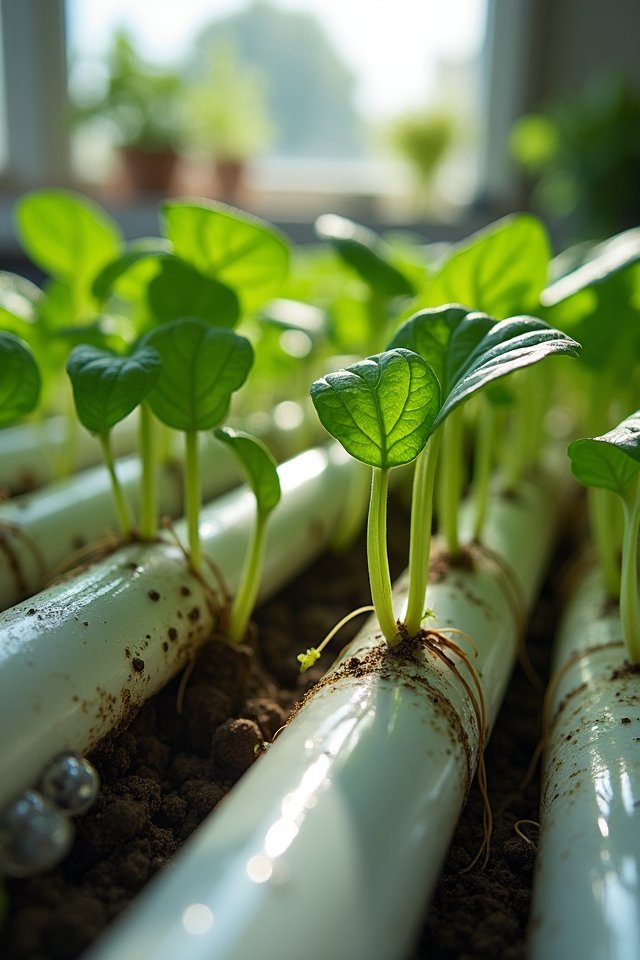
While tending to your hydroponic setup, you might encounter a few pesky problems that require quick action! First, if your plants are wilting and turning yellow, don’t panic! Check the pH balance—if it’s off, your plants can’t absorb nutrients properly, like trying to drink through a straw with a hole in it! Adjust it to around 5.5 to 6.5 for best results.
Next, keep an eye out for nutrient deficiency. If your leaves are speckled or discolored, they’re crying for help! Ramp up the nutrient solution, but be careful not to overdo it—plants can have an “iron overdose,” too! Remember, a happy hydroponic garden means you’ll enjoy a bountiful harvest full of vibrant vegetables! Let’s innovate!
Frequently Asked Questions
How Much Space Do I Need for a Hydroponic System?
When you’re diving into hydroponics, you’ll want to think about space requirements! For a simple setup, 2 feet by 4 feet can yield stunning results. That’s like fitting a cozy food truck in your backyard! If you’re eyeing more plants, go bigger—perhaps a 4 feet by 8 feet space. Just remember, optimize your layout with proper light and airflow! Who knew being innovative could be so fun? You’re about to transform your gardening game!
Can I Use Hydroponics Indoors or Outdoors?
Did you know that 80% of indoor growers report thriving plants year-round? You can totally use hydroponics indoors to enjoy those indoor benefits, like consistent growing conditions and less pest drama! Outdoor challenges, though, like temperature swings and pesky wildlife, can test your green thumb. But whether you’re growing basil on a windowsill or tomatoes in the backyard, hydroponics lets you innovate fresh, delicious produce. Isn’t that awesome? You’ll love the results!
How Long Does It Take to Grow Plants Hydroponically?
Growing plants hydroponically can be a speedy affair! With the right setup, you could see growth rates that’ll wow you. On average, leafy greens like lettuce can take just 4-6 weeks to mature, while tomatoes might require 10-14 weeks. Remember, it all hinges on nutrient requirements and light levels. So, adjust those “plant breakfasts” accordingly, and watch your garden flourish like magic! Isn’t that a thrilling prospect? Your green thumbs’ll thank you!
Are There Any Hydroponic Plants That Are Difficult to Grow?
You’ve probably heard the saying, “Not all plants are created equal!” And that couldn’t be truer in hydroponics! While many plants thrive, some pose hydroponic challenges that’ll test your gardening skills. For instance, growing blueberries is tricky—they need just the right pH and nutrients. Or try your hand at growing ginger, which often demands precise temperature control. Are you up for the challenge? These difficult plants might just spark your innovative spirit!
What Is the Initial Cost of Setting up a Hydroponic System?
When you’re diving into hydroponics, the initial investment can vary, usually ranging from $100 to $500, depending on the setup you choose. It’s like picking a new car! In a cost comparison, more complex systems might seem intimidating at first, but they can potentially yield high rewards. Don’t forget about the joy of fresh herbs and veggies at your fingertips! So, grab your gardening gloves, and let’s grow something amazing together!
